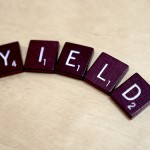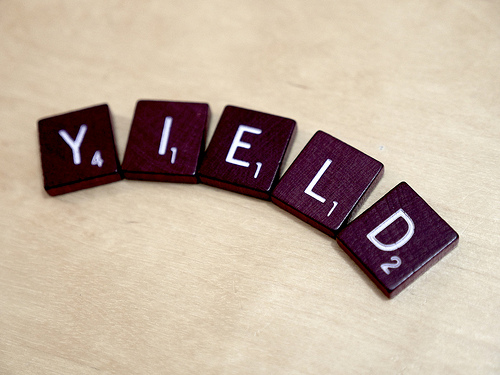
A few weeks ago, I looked at P/E ratios but, as with the baseball bat, a P/E ratio has a surreptitious and more powerful use for which it was probably not intended–inverting it gives you the share’s earnings yield. This earnings yield can, in turn, be directly compared with other investments, such as government bond yields.
When I first started to buy shares I was very prone to being seduced by a fat dividend yield. After all, isn’t that the tangible return that you are most likely to earn from an investment? If dividend-paying shares outperform in the long run, as we are told and I am not disagreeing, then why not just buy shares that yield the most (having eliminated the endangered dividends)? That, at least, was my initial policy. But, of course, I quickly learned that companies payout ratios vary widely according to their reinvestment needs or opportunities–IBM pays out a much lower percentage of its earnings as dividends than Altria because it has something productive to do with the money. If reinvestment opportunities are plentiful and management has proved itself to be sufficiently competent at reinvesting, then why opt for buying back shares or the less tax efficient route of paying dividends? Just invest it – that is the point of business after all.
Instead, therefore, of comparing companies by the dividend they yield, it is better to compare them by their earnings yield. Another useful aspect to the earnings yield, is that you can compare a potential investment to another asset class entire, such as, a government or corporate bond.
Calculating the earnings yield
If a company earns 4p per share and its share price is 80p, then you simply calculate its earnings yield as follows:
4 / 80 = 0.05 (5%)
Alternatively, if you know that the company’s P/E ratio is, say, 20, then just divide this into 1 to get the earnings yield.
Using the earnings yield and the Fed model
If the median P/E ratio for the S&P 500 is 15, which Jeremy Siegel in his Stocks for the Long Run says it is, then the median earnings yield for a share is 6.6666% (not a difficult yield to remember…) Buying something that earns better than this, therefore, and you are paying a below average price.
Would you rather buy a government bond or a share that yields 5%? Personally, I would buy the share. There are a few differences, of which the first is that the government bond’s yield is safer because it is guaranteed. You know that it will be paid on time. The share, on the other hand, is a business and although its numbers may show the 5% yield to be what it earned for the last twelve months, its business may deteriorate so that it earns less after you buy it. But, equally, it may improve or, if it has pricing power, it may just improve with inflation. After ten years, if its earnings rise at 10% per year, the government bond will still yield just 5% but the share would be yielding 12.97%. That is the power of compounding.
Jeremy Siegel mentions a paper entitled “Earnings, Forecasts and the Predictability of Stock Retures: Evidence from Trading the S&P” that was published by researchers from the Federal Reserve in 1997. This paper documented the correlation between the earnings yield on stocks and the 30-year government bond rate. Alan Greenspan, Chairman of the Fed at this time, agreed with the paper and suggested that the stock market was overvalued when the market, as a whole, yielded less than the 30-year Treasury bond and was undervalued when it yielded more. The logic is that investors move their money into bonds, when the safer Treasury yield is better than the earnings yield on volatile shares.
Siegel, however, points out that this model has not functioned as well at times when deflation has become the primary concern, such as before the 1970s or since the financial crisis of recent years. Perhaps this is why Ben Graham suggested looking for shares whose earnings yield twice that of the prevailing AAA corporate bond yield–it gives you a margin of safety. As the current quality bond yield is about 3.8%, we should be looking for an earnings yield of about 7.5%.
